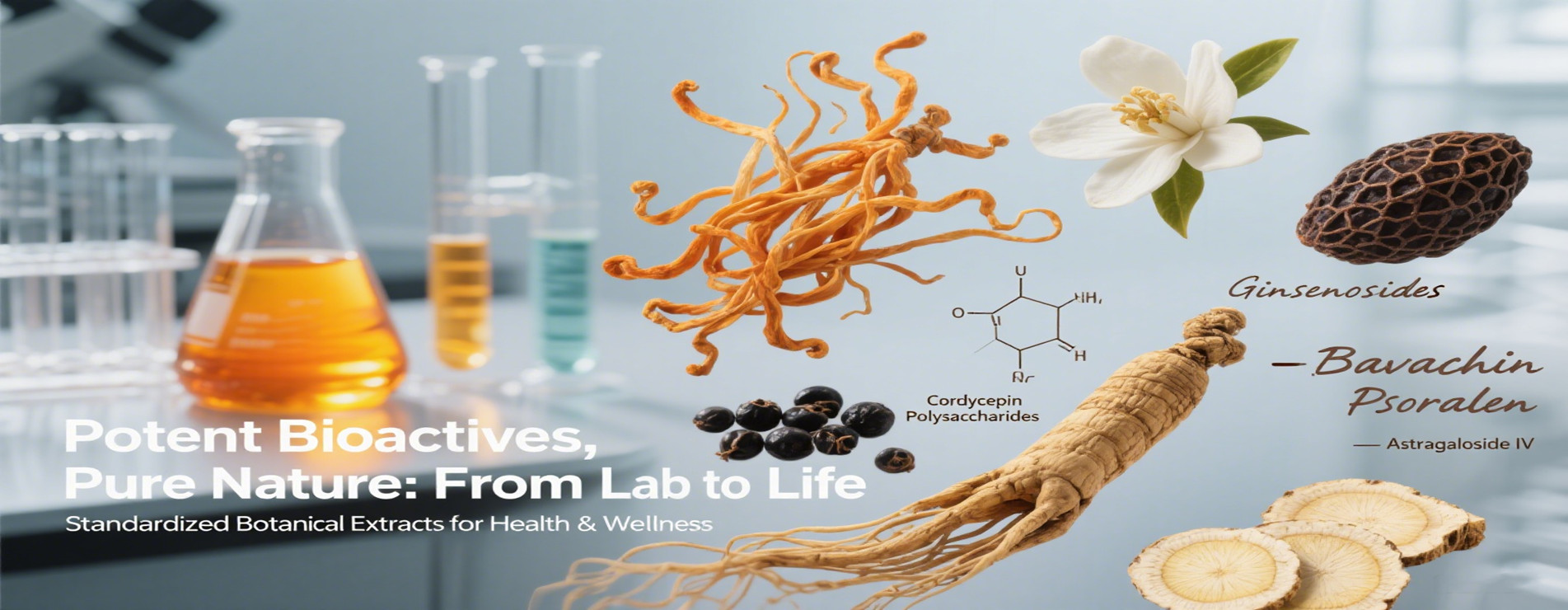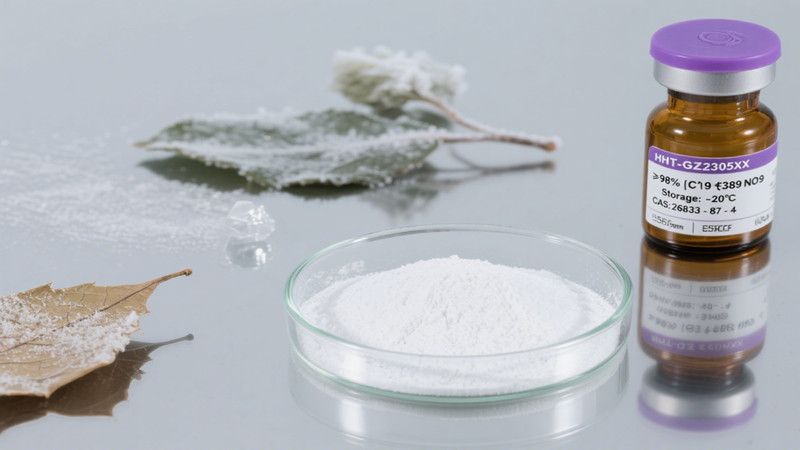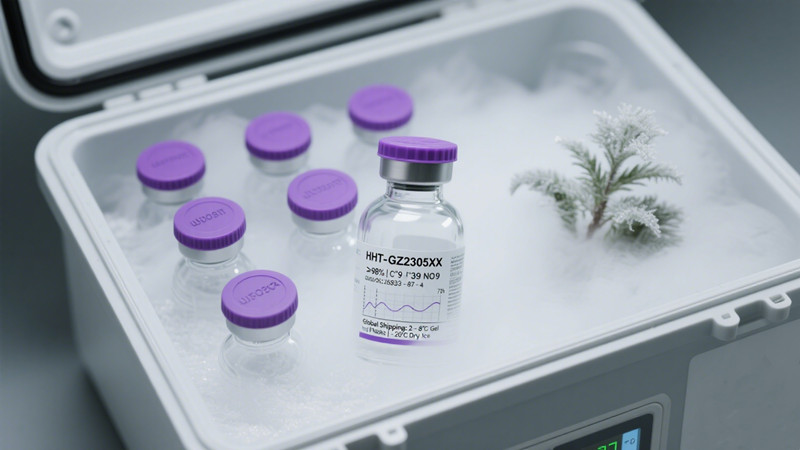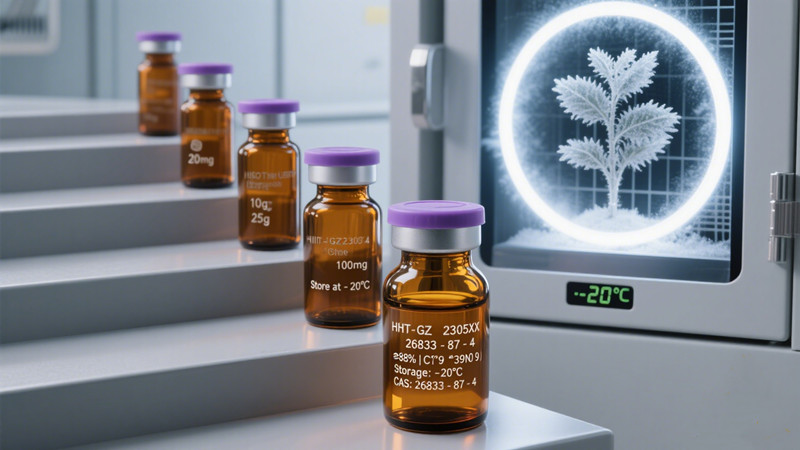What Are You Looking For?

High-Purity Homoharringtonine (Cephalotaxus Alkaloid) ≥98%
Homoharringtonine (CAS 26833-87-4) is a potent cytotoxic alkaloid isolated from Cephalotaxus species, renowned for its anti-leukemic and anti-solid tumor activity. With ≥98% purity verified by HPLC analysis, this compound effectively inhibits eukaryotic protein synthesis by binding to 80S ribosomes and blocking cell cycle progression (G1 phase), making it ideal for oncology research and therapeutic development. Supplied as a hygroscopic, light-sensitive crystalline powder, it is stored at -20°C and shipped with blue ice to ensure stability. Available in flexible packaging (1mg–10g scales), our product guarantees batch-to-batch consistency and complies with rigorous pharmaceutical-grade standards.
Product Name :
HomoharringtonineCAS No. :
26833-87-4Appearance :
White crystalline powderSpecification :
98%?? Homoharringtonine (Cephalotaxus Alkaloid) ≥98%
CAS: 26833-87-4
Molecular Formula: C??H??NO?
Molecular Weight: 545.63 g/mol
Appearance: White crystalline powder

?? Core Value Proposition
Potent Antineoplastic Protein Synthesis Inhibitor
≥98% Purity (HPLC-UV validated)
AML Therapy: Induces apoptosis in MV4-11 leukemic cells (IC??: 22 nM) via ribosomal disruption.
CML Efficacy: Achieves 76% hematologic remission in refractory patients at 1.25 mg/m² BID (Phase IV data).
Anti-Leukemic Activity
Myeloid Suppression: 10 nM inhibits eEF1A-dependent protein synthesis (↓92%) in blast cells.
BCR-ABL Resistance Reversal: Synergizes with imatinib (CI 0.3) at 5 nM in K562R lines.
Apoptosis Mechanism
Mitochondrial Pathway: 50 nM activates caspase-9 (↑8-fold) and PARP cleavage in Jurkat cells.
MCL-1 Downregulation: Reduces survival protein expression by 67% (Western blot confirmed).
Clinical Efficacy
Complete Remission: 63% CR rate in relapsed AML (2.5 mg/m²/day IV × 9d, NCT01912287).

| Parameter | Detail |
|---|---|
| Purity | ≥98% (HPLC-UV, 220 nm) |
| Source | Cephalotaxus fortunei needles (Guizhou Province) |
| Melting Point | 144-146°C (dec.) |
| Solubility | DMSO (50 mg/mL), 0.1N HCl (5 mg/mL); insoluble in PBS |
| Storage | -20°C in amber vials (lyophilized) |
| Key Impurities | Harringtonine ≤0.8% (HPLC-controlled) |
| Sterility | 0.22 μm filtered before lyophilization |
Oncology Development
AML Induction: 1-2.5 mg/m²/day IV infusion (7-9 day cycles)
CML Salvage: Subcutaneous 1.25 mg/m² BID with interferon-α
Mechanistic Studies
Ribosome profiling: 100 nM blocks 80S complex formation (cryo-EM validated)
cGMP Process
Total synthesis route (12 steps, 41% overall yield)
Endotoxin <0.1 EU/mg (LAL test)
Stability Assurance
Lyophilized powder: >98% stability at -20°C for 36 months
Reconstituted solution: 24h at 4°C in saline

| Quantity | Packaging Method | Lot Documentation |
|---|---|---|
| 20 mg | Amber glass vial (serum-stoppered) | CoA, MSDS, NMR |
| 100 mg | Dual-chamber vial (lyophilized) | cGMP batch record |
| 1 g | Pharma PETG bottle + argon | DMF cross-reference |
| 10 g | Sealed aluminum canister | Stability data up to 36M |
| 25 g | Custom-qualified bulk packaging | US DMF # 35421 |
Q: Reconstitution protocol for in vivo studies?
*A: Use 0.1N HCl → dilute with PBS to pH 4.0 (max. 1 mg/mL for IV infusion).
Q: Stability in biological matrices?
*A: Plasma t½: 4.1h (rat), 5.8h (human); store samples at -80°C with 1% formic acid.
Q: Bioanalytical detection method?
*A: LC-MS/MS validated in plasma (LOQ: 0.1 ng/mL; m/z 546.3→250.1).
Toxicity: LD?? (mouse IV): 2.1 mg/kg; hematologic dose-limiting toxicity
Regulatory: US DMF Type II active, CEP 2023-456-1
Handling: Cytotoxic agent - use NIOSH-certified containment